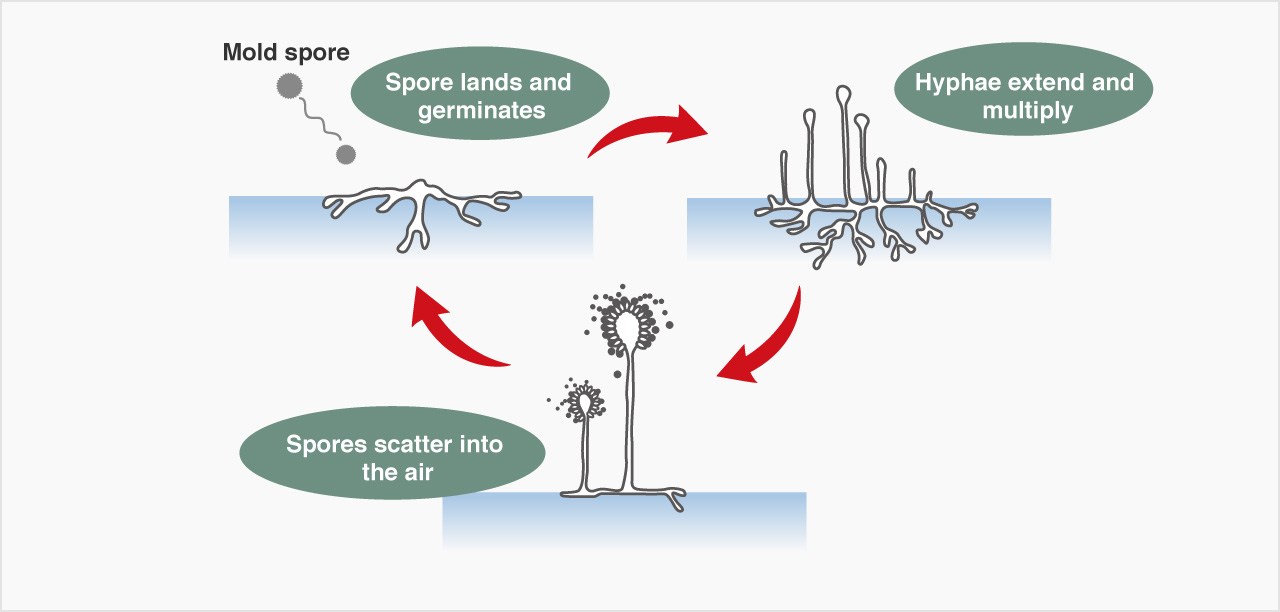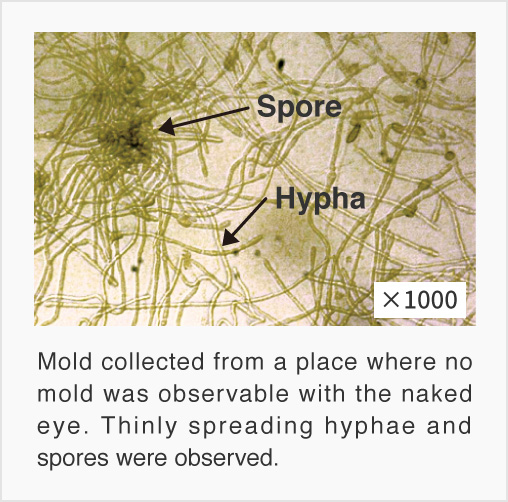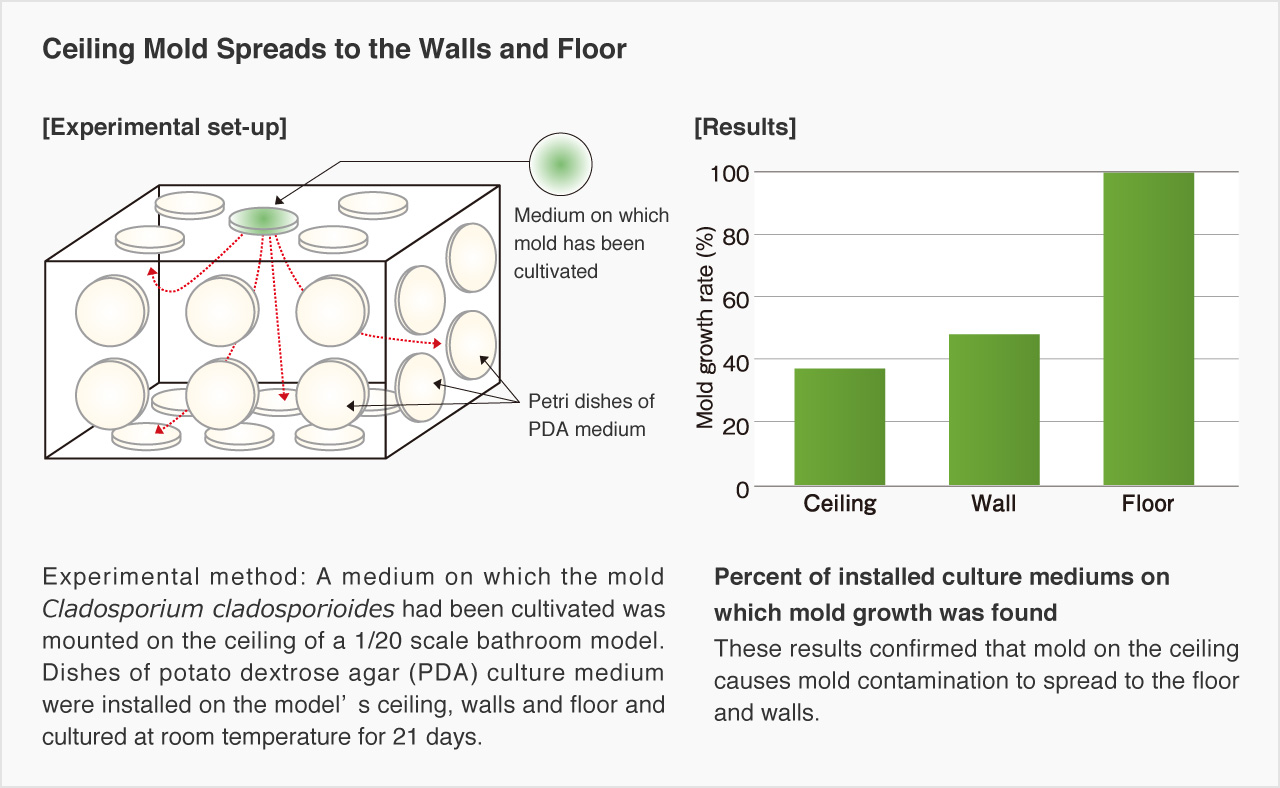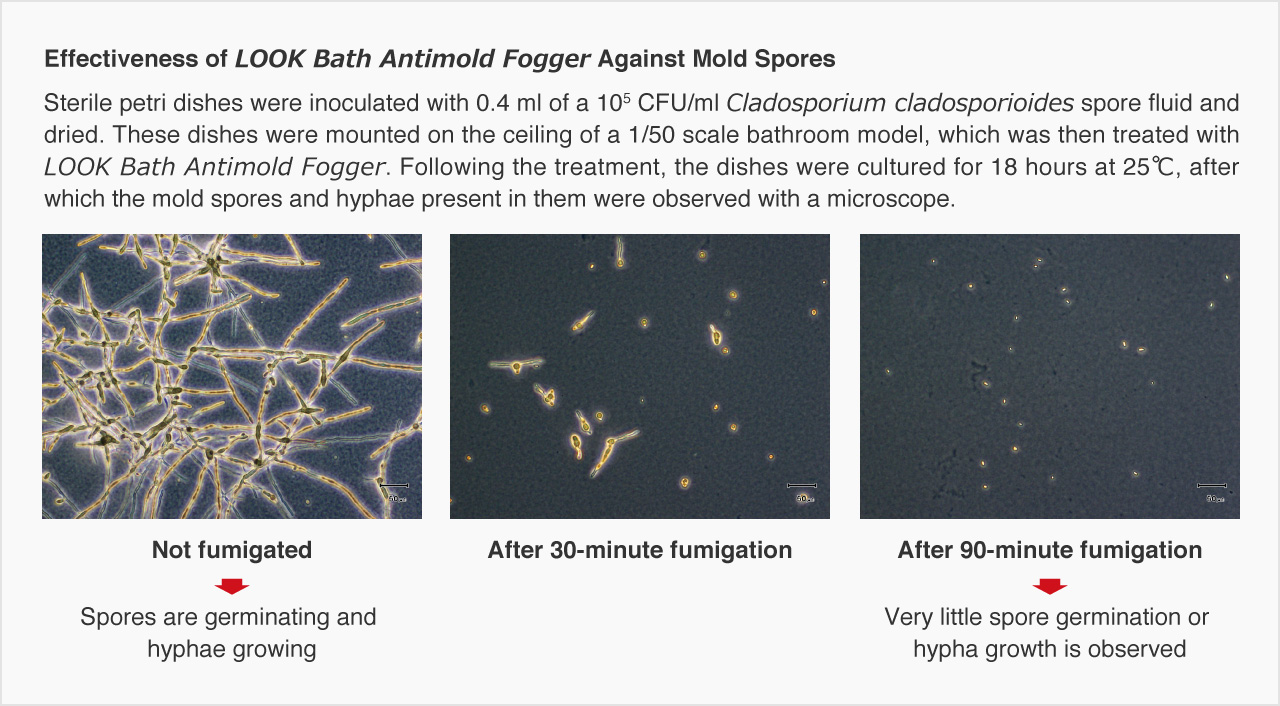The place in the home where mold thrives most easily is the bathroom. Bathrooms are often warm and humid, with abundant nutrient sources that mold can use, such as sebum and shed skin cells, making them an ideal environment for mold to reproduce and thrive.
A major difference between bacteria, yeast and mold is how they propagate. Bacterial populations increase by cell division and yeast by cell division or budding (in which an outgrowth emerges on a parent cell then detaches to become a new individual). Molds reproduce by growing hyphae (thin, branching filaments) from spores.
A mold grows and expands over an area by extending its hyphae in search of nutrients that it takes in through the tips of these structures. When nutrients become scarce and further growth difficult, the mold seeks to reproduce, forming new spores at the tips of its hyphae. These spores are discharged into the air and may scatter across a wide area before landing on a surface, such as the ground or floor. If the temperature, humidity, nutrients and other conditions are right, the spores will begin to extend hyphae of their own and grow. Mold propagates through the repetition of this cycle. Only after hyphae have developed and numerous layers have formed is mold visible to the naked eye. This means that mold may be present even in places that look mold-free.

When one thinks of bathroom mold, the black mold that develops on the grout between tiles and around door seals generally comes to mind. However, mold is usually not visible on the ceiling to the naked eye, even if we think to look for it.
So is the ceiling mold-free? To answer this question, we made a survey of actual bathroom ceilings. In about 50% of the 25 homes surveyed, mold was detected on the ceiling despite none being visible to the naked eye. This result, when combined with the proportion of houses where ceiling mold was readily visible, revealed that a total of about 80% of the surveyed homes had mold on their bathroom ceilings.
Bathroom ceilings are less likely to become soiled than the walls and floor and thus offer fewer nutrients for mold. Since hyphae are therefore unable to grow, mold on the ceiling instead focuses on propagation, releasing spores. When mold hyphae grow thickly, the resulting aggregation looks blackish, but because the hyphae of ceiling mold are typically thinly spread out, the mold does not appear black and is difficult to spot.
Spores dispatched into the air from the sporangia mold on the bathroom ceiling attach to the walls and floor, where they encounter plentiful nutrients (dirt), allowing hyphae to grow. Consequently, even if mold is diligently cleaned off the walls and floor, unless the mold on the ceiling is also removed, spores scattering from the ceiling will result in mold growing back on the walls and floor.


How can mold be eliminated from the hard-to-clean bathroom ceiling? As we began development of a new product to address this issue, we turned our attention to fumigation, a method that takes advantage of the closed-in nature of bathrooms. Fumigators disperse active ingredients as a fog, reaching into every corner of the treated space.
When a fumigator is used in the bathroom, the fog penetrates the entire space, delivering the sterilizing agent to the ceiling, walls and floor. The sterilizing agent we adopted is a silver preparation that is heat-resistant and readily dispersible in fog. By impeding the activity of the mold spores on the ceiling, this fog helps eliminate mold throughout the bathroom.

Back to Science Journal Menu